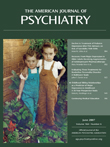Counseling and Psychotherapy Essentials: Integrating Theories, Skills, and Practices
Although the aims of effective and compassionate patient care are consistently held in common, the range of approaches, schools, and theories of psychotherapeutic practice can be daunting to even the most seasoned of practitioners. The sheer variety of methodological approaches and the lexical commitments that they presuppose can often obscure as much as inform our outcomes. With the needs of actual clinical practice consistently in mind, the authors of this textbook present a pragmatic, synthetic approach to psychotherapy that does not dilute the challenges we face both in the variety of our patients’ particular life narratives and the conceptual maps that can be of use in their care. To this daunting task, the authors bring distinctive and needed complementary perspectives and experiences: Glenn E. Good is a professor of education who has written a handbook of psychotherapy and counseling, and Bernard D. Beitman is a professor of psychiatry who has written on bridging the pharmacology/psychotherapy divide. These collaborative voices enhance and are consonant with the larger integrative psychotherapeutic aims of the textbook.
The book’s structure is conducive to its larger aims of integration by beginning with theoretical foundations and then sharpening its focus to practical clinical issues. Section I, “Foundations of Counseling and Psychotherapy,” provides an abstract—yet accessible—framework to the reader by summarizing a number of the main approaches in the field: psychodynamic, behavioral, cognitive, humanistic, multicultural, and systemic. Section II, “Components of Effective Counseling and Psychotherapy,” provides the reader with insights about the basic features of successful and competent office practice, including guidance on therapeutic communication, working alliances, identifying patterns and their treatment, strategies for facilitating change, resolving resistance, negotiating transference and countertransference, and termination. Finally, Section III, “Higher Incidence Concerns and Effective Treatments,” addresses specific high-yield issues for clinicians, such as depression, suicide, anxiety, substance abuse, and couples, family, and marital therapy.
The authors have distilled a tremendous amount of material and clinical literature germane to psychotherapy and counseling. Throughout, they write in the tradition of the biopsychosocial model that is the foundation for American psychiatric practice, and while avoiding jargon, they also manage to avoid facile reductionism. Readers interested in the historical development of the approaches to the mind described here can supplement their readings by turning to such classics as Leston Havens’s Approaches to the Mind(1) .
The last chapter, “Medications, Therapy, and the Neural Circuitry of the Brain,” tackles the rapidly emerging field of psychosocial neurobiology. Readers interested in supplementing the discussion offered in this chapter may well want to turn to such fundamental works as Arnold Modell’s Imagination and the Meaningful Brain(2) .
1. Havens LL: Approaches to the Mind: Movement of the Psychiatric Schools From Sects Toward Science. Cambridge, Mass, Harvard University Press, 1987Google Scholar
2. Modell, Arnold H: Imagination and the Meaningful Brain. Cambridge, Mass, MIT Press, 2003Google Scholar



